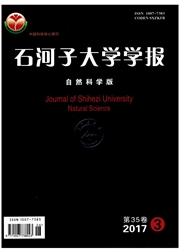

 中文摘要:
中文摘要:
在人工气候室采用盆栽试验,设置不同浓度钾素营养处理,通过测定不同钾营养条件下不同棉花品种叶片光合作用及叶片保护性酶活性的变化,探讨钾营养对棉花光合能力及叶片衰老特性的影响,为棉花施用钾肥提供参考依据。试验选取新陆早13号、新陆早33号、新陆早45号共3个陆地棉品种,设置3个钾素营养浓度梯度,测定棉花叶片光合作用、叶绿素荧光等光合性能指标。结果表明:钾营养能影响棉花叶片光合能力,钾素缺乏降低了棉花叶片叶绿素含量、净光合速率(Pn)、气孔导度(Gs),光系统Ⅱ的最大光化学效率(Fv/Fm)、实际光化学效率(Yield)、光化学猝灭系数(%P)也有所降低,而非光化学猝灭系数和花青素含量却有所升高;钾素缺乏导致棉花叶片超氧化物歧化酶(SOD)的活性降低,过氧化物酶(POD)活性增强(NPQ),丙二醛(MDA)含量升高,因此,钾素营养对叶片保护性酶系统有重要的影响。
 英文摘要:
英文摘要:
A pot experiment had been carried out in artificial climate chamber. We designed three levels of concentrations of potassium nutrition,measured cotton leaf photosynthesis and leaf protective enzyme activity under the conditions of different potassium nutrition levels,and explored the effect of potassium nutrition on cotton photosynthetic capacity and the leaf senescence characteristics,which provided a reference for cotton potash fertilization. Three varieties of upland cotton were selected: Xin- luzao 13,Xinluzao 33, Xinluzao 45. We set three potassium concentration gradients and determined cotton leaf photosynthesis and chlorophyll fluorescence performance. The results showed that: potassium nutrition affected cotton leaf photosynthetic capacity-potassium deficiency reduced the cotton leaf chlorophyll content, net photosynthetic rate (Pn), stomatal conductance (Gs),and the maximum photochemical efficiency of photosynthetic system Ⅱ,actual photochemical efficiency of photochemical quenching,and increased non-photochemical quenching and anthocyanins content;potassium deficiency decreased activity of the cotton leaf superoxide dismutase (SOD), and improved peroxidase (POD) and the accumulation of malondiaidehyde (MDA). Potassium Nutrition has a significant effect on leaf protective enzyme systems.
 同期刊论文项目
同期刊论文项目
 同项目期刊论文
同项目期刊论文
 期刊信息
期刊信息
